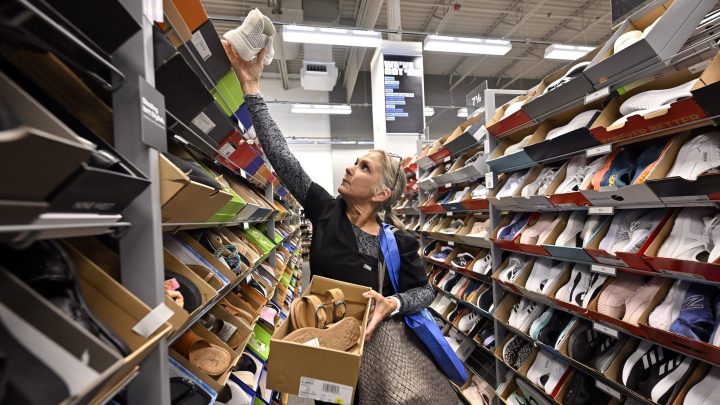
The American consumer just keeps spending

For a while now in this weird, wild economy we’ve got going, there’s been this sense that things might turn bad, or get worse, just around the corner. Yet they don’t.
Case in point: U.S. retail sales, as reported by the Commerce Department on Thursday. Economists were expecting them to be down in May from April. Instead, we got a sizable increase in sales at stores and e-commerce sites: 0.3%, which was nearly as big a gain as in April. The only sector that saw falling sales was gas stations, and that’s because it cost less to fill up the tank last month.
Pretty much every other retail category was up: furniture, electronics, building materials, motor vehicles, sporting goods, bars and restaurants.
This is huge because consumer spending is about two-thirds of the economy. So how and why do consumers keep spending, even in the face of persistent inflation, high interest rates and lousy sentiment?
Make no mistake: Americans are still plenty worried about the economy. In its latest poll, public opinion firm Morning Consult found that 54% of consumers are “very concerned” about inflation, said retail analyst Claire Tassin. “That is a lot of people and a very high level of concern.”
But a year ago, that was 10 percentage points higher. “The downward trend line is certainly encouraging,” she noted.
After years of having money during the pandemic but being unable to spend it, consumers are now finding lots of ways to spend, Tassin added.
“People are — you know, I feel like I’ve overused this phrase — but Americans have been extraordinarily ‘resilient’ in the face of inflation,” she said.
Where exactly does that resilience come from? “The employment situation,” said Robert Frick at Navy Federal Credit Union. “More people working, more paychecks, wage growth has held up really well. More money in people’s pockets. More money to spend.”
This is especially true for wealthier Americans, Tassin pointed out: “So those in households earning over $100,000 annually, they are concerned about inflation generally,” she said. “It’s more like they’re reading the headlines, but less so that they’re having to make trade-offs.”
Middle- and lower-income people are making those trade-offs — spending more to buy the same goods at higher prices, said retail analyst Marshal Cohen at Circana.
“Think about if you were to have to spend an extra $50 in your shopping basket on a given week. That, in most people’s households, means $50 less that they can spend on apparel, technology, entertainment,” he said.
And those consumers are falling behind, per Frick at Navy Federal Credit Union.
“We see this more and more with our lower-income members. They are really tapped out, run up their credit, exhausted their savings,” he said. “And a lot of them now are resorting to payday loans, car-title loans.”
Still, most economists predict that the only thing likely to squelch consumer spending would be a sharp rise in unemployment.
There’s a lot happening in the world. Through it all, Marketplace is here for you.
You rely on Marketplace to break down the world’s events and tell you how it affects you in a fact-based, approachable way. We rely on your financial support to keep making that possible.
Your donation today powers the independent journalism that you rely on. For just $5/month, you can help sustain Marketplace so we can keep reporting on the things that matter to you.











